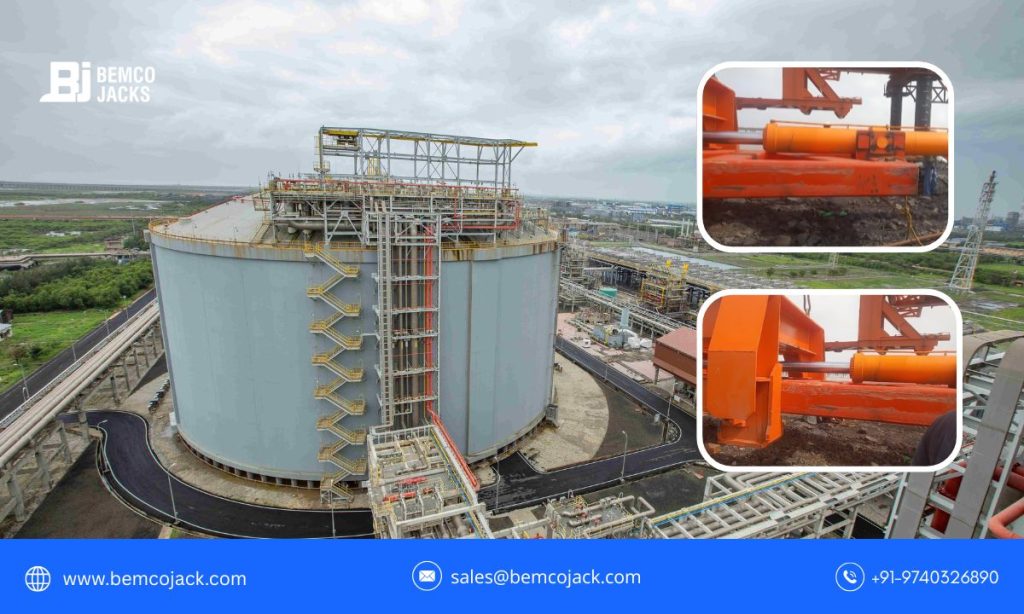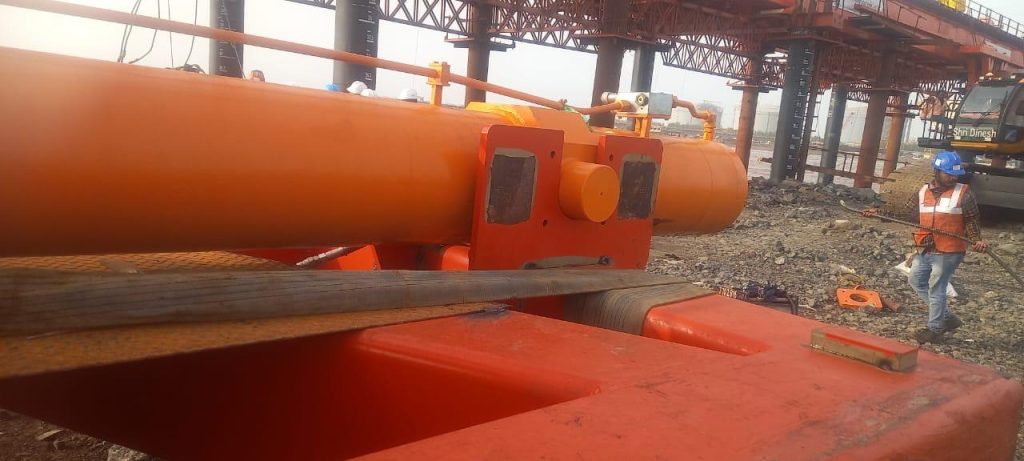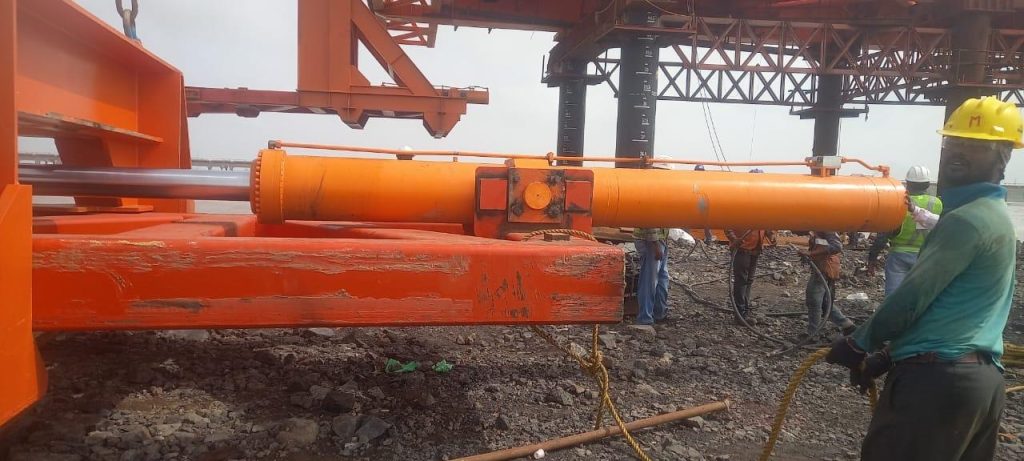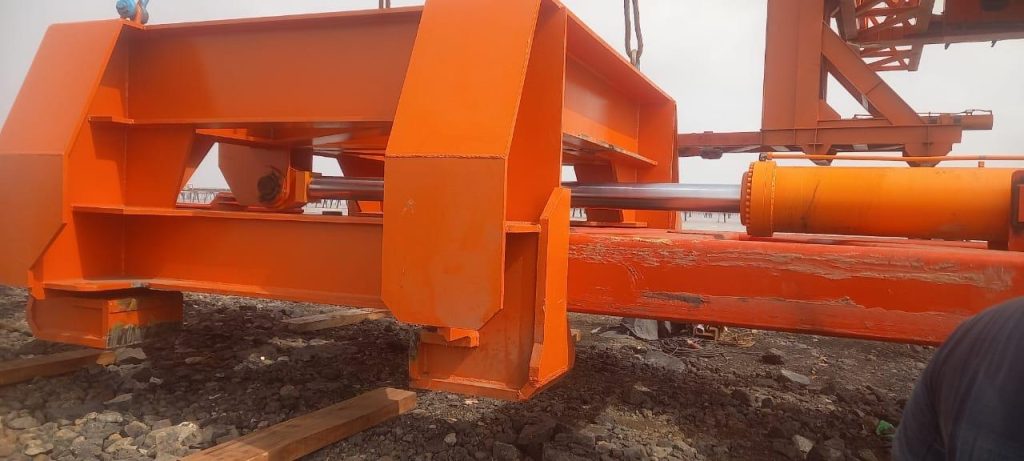Dahej LNG Terminal – India’s Largest LNG Hub

The expanded energy requirement of the country makes liquefied natural gas (LNG) as a critical element of the energy basket. The development of gas infrastructure in the country owing to growing industry, urbanization and the increased demand for cleaner fuels has lead to the building of world-class facilities to secure energy. The Dahej terminal in Gujarat LNG systems has emerged as a jewel in the crown of these facilities. Considered the largest LNG terminal of India, Dahej is not merely a terminal, but the central pillar of the country’s LNG supply chain.
Terminal Dahej has been operating for gas supply since early 2004 and is one of the first LNG terminals to commence operations. It has immense terminal powe and gas liquefaction and expansion facilities that has aided in the consistent upscaling of operations over the year. The facility verticaly integrates LNG barter operations and plays a crucial role in coal and oil substitution. Filled to the brim with gas liquefiables, the facility not only supplied to the rising domestic demand for the product, but has enhanced India’s global stature as well.
Location and Ownership
The terminal enjoys the undoubted competitive advantage of being housed in a proximity near to the comparitive industry that determines terminal gas operations. The advantageous geographical position eases terminal gas operations during monsoon. The position of the Dahej terminal is crucial and significant to India LNG supply, as it balances the quota for domestic supply and receipts of the external supplies of gas. The terminal makes the inner country readily accessible and systemic with the pipeline and truck networks.
The terminal is operated by Petronet LNG Limited (PLL), a company backed by some of India’s largest energy giants—ONGC, Indian Oil Corporation Limited (IOCL), Bharat Petroleum Corporation Limited (BPCL), and GAIL (India) Limited. This collaboration reflects the importance of Dahej in India’s long-term energy security strategy. With strong institutional backing and government support, Dahej enjoys stability, making it one of the most reliable LNG facilities in South Asia.
History and Growth
The construction of Dahej LNG Terminal began in 2004 with an original capacity of 5 million metric tonnes per annum (MMTPA). There were limited LNG imports in India back then, and Dahej offered an important step in ensuring stable energy supply.
The complex has gone through several phases of expansion.
- It first increased its capacity to 10 MMTPA in order to meet the growing demand from both the industrial sector and domestic households.
- Later, the capacity was expanded to 15 MMTPA which then secured its position as the leading LNG terminal in India.
- It is currently operating with a capacity of 17.5 MMTPA which not only makes it the largest terminal in India, but also one of the largest in Asia.
This development indicates the increasing demand for natural gas in India as well as the need for the government to prioritize to slash its carbon emissions. Further expansion plans are expected, which emphasizes the growing significance of Dahej in upcoming years.
Current Capacity and Infrastructure
The Dahej LNG Terminal possesses advanced infrastructure that is capable of handling LNG with a high volume and in great detail. These infrastructures guarantee the continuous flow of the LNG shipments and the gas that has been regasified all throughout India.
The oil and gas infrastructure consists of the following elements:
- LNG Storage Tanks – These involve Multiple large cryogenic tanks which store Liquefied Natural Gas at extremely low temperatures until the gas is to be regasified.
- Jetty – These facilities are equipped to service the largest LNG cargo vessels in the world such as the Q-Flex and Q-Max.
- Truck Loading Bays – These have been constructed to provide uninterrupted surface transport to areas that are not reachable via the pipeline network.
- Regasification Units – These are equipped with state-of-the-art mechanisms which reconvert the liquefied natural gas to its gaseous state to be supplied to Indian Natural Gas Grid.
The extensive infrastructure at Dahej makes it possible to cater to industries, home users as well as power plants across the globe.
How the Dahej LNG Terminal Works
Understanding the importance of Dahej is only possible when one understands the operations of the terminal. The Dahej terminal serves as a gas importing point for the Indian gas network for the importing and regasification of LNG. The Terminal makes use of sophisticated technology along with well designed safety systems which provide efficient transport to over a million users.
Here’s a simplified breakdown of the operations:
- Receiving LNG – Imported LNG arrives via specialized carriers.
- Unloading – State-of-the-art jetties allow for safe unloading of LNG into the storage tanks.
- Storage – LNG is stored in cryogenic tanks at temperatures below –160°C.
- Regasification – Before distribution, LNG is converted back into natural gas using sophisticated vaporization units.
- Distribution – Gas is supplied via pipelines to industries and cities or loaded into cryogenic trucks for regional distribution.
This robust system ensures India enjoys a steady supply of natural gas without disruptions.
Operational Performance
The Dahej LNG Terminal’s operational performance highlights its role as India’s energy backbone. Since its commissioning, it has consistently handled hundreds of LNG cargoes each year, demonstrating both reliability and efficiency.
Currently, the terminal handles 17.5 MMTPA of LNG throughput, which forms a significant share of India’s total LNG imports. Its high-performance record ensures uninterrupted supply to industries such as power generation, fertilizers, petrochemicals, and city gas distribution networks.
By contributing heavily to India’s LNG imports, Dahej ensures that natural gas remains accessible and affordable, helping the country maintain its clean energy momentum.
Expansion Plans and Future Development
As energy demand in India continues to surge, Petronet LNG is working on ambitious expansion plans for Dahej. These plans aim to scale the terminal’s capacity and diversify its operations:
- Capacity Expansion – Plans are underway to boost capacity from 17.5 MMTPA to 22.5 MMTPA.
- Third Jetty Construction – A new jetty is being built to handle increased LNG cargo traffic.
- Diversification into Ethane and Propane – Future plans also include handling other fuels like ethane and propane, which are critical for the petrochemical sector.
This expansion will not only secure India’s energy needs but also place Dahej among the top LNG hubs globally.
Strategic Importance in India’s Energy Sector
The importance of Dahej goes far beyond numbers. It plays a strategic role in shaping India’s energy sector and long-term sustainability goals.
- Energy Security – By handling the majority of LNG imports, Dahej ensures India’s energy stability.
- Industrial Growth – Supplies reliable fuel to critical industries, driving manufacturing and production.
- Clean Energy Shift – Reduces dependency on coal, aligning with India’s renewable energy targets.
- Economic Benefits – Creates jobs, boosts local economies, and enhances India’s global energy position.
Dahej’s contribution is not just operational it is transformational for India’s economy and environment.
Safety and Environmental Measures
Handling LNG requires utmost safety, and Dahej has set benchmarks in this regard. The terminal is equipped with double containment tanks, ensuring zero leakage risks. Comprehensive fire safety systems protect workers, equipment, and the environment from potential hazards.
Additionally, environmental measures are a key focus:
- Regular monitoring ensures compliance with global environmental standards.
- Expansion projects undergo thorough environmental impact assessments.
- Sustainability initiatives include community development programs and eco-friendly operations.
This dual focus on safety and environment makes Dahej a trusted and responsible energy hub.
Bemco Jack’s Contribution at Dahej LNG Terminal
Large-scale infrastructure projects like Dahej require advanced engineering solutions. This is where Bemco Jack, a leading hydraulic jack manufacturer in India, made a significant contribution.
To support operations at the terminal, we supplied:
- Synchronized Hydraulic Cylinders – For smooth movement of gantries.
- High-Powered Pumping Units (HPU) – To power pile guiding systems.
- Reliable Hydraulic Systems – Ensuring precision, safety, and efficiency in handling heavy equipment.



Our solutions enabled safe and precise handling of massive structures, making operations seamless. As trusted hydraulic cylinder manufacturers, our expertise added value to one of India’s most important energy projects.
“We supplied synchronized hydraulic cylinders and a powerful pumping unit for smooth gantry movement in the Pile Guiding System. Glad to support such a major project with reliable hydraulic solutions!”
This case highlights how specialized hydraulic systems contribute to:
- Improved safety during heavy-duty operations.
- Enhanced precision in gantry and pile guiding systems.
- Efficient handling of large-scale equipment.
The role of a trusted hydraulic jack and hydraulic cylinder manufacturer becomes evident in projects of this magnitude.
Future Outlook
Looking ahead, the Dahej LNG Terminal is expected to remain the cornerstone of India’s LNG roadmap. The planned expansion to 22.5 MMTPA, along with infrastructure upgrades like a third jetty, will increase its capacity and reliability. Moreover, diversification into ethane and propane handling opens new avenues for India’s petrochemical sector.
Companies like Bemco Jack will continue to play a crucial role by offering advanced hydraulic jack and hydraulic cylinder solutions for such projects. Their expertise ensures that India’s most ambitious energy projects run smoothly, efficiently, and safely.
Conclusion
The Dahej LNG Terminal is more than a facility—it is India’s energy lifeline. From its commissioning in 2004 to its present status as a 17.5 MMTPA giant, the terminal has consistently supported India’s energy security. With its ongoing expansion and future plans, Dahej is set to strengthen its role even further.
Backed by Petronet LNG Ltd., supported by leading energy companies, and aided by advanced solutions from engineering partners like Bemco Jack, Dahej represents the future of India’s clean energy journey. As India continues to transition toward sustainable fuels, the terminal will remain the backbone of its LNG ecosystem.
If you’re looking for reliable hydraulic solutions for critical infrastructure or industrial projects, trust Bemco Jack-a leading hydraulic jack manufacturer in India and one of the most trusted hydraulic cylinder manufacturers. With decades of expertise, Bemco Jack ensures safety, precision, and efficiency in every project.
Contact us today to power your next project with world-class hydraulic jacks and cylinders.

